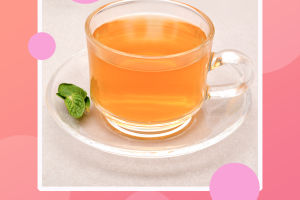For hundreds of years, grain has played an important role for human life in the Nordic countries. For example, in the 18th Century when food was scarce, grain, in the form of gruel, porridge and bread, made up around 80 percent of diets. We used to eat a lot of rye and barley, but little wheat. Today, however, wheat is the most common cereal in the Nordic countries. Even today, grain is a very important staple food that is grown in almost half the total cultivated land in the world.
There is evidence that daily consumption of cereals, particularly wholegrain cereals, may play a role in preventing chronic diseases such as coronary heart disease, diabetes, and colorectal cancer. Because there may be several health benefits to eating wholegrain cereals, many health professionals encourage their consumption. Furthermore, a wider variety of wholegrain foods that are quick and easy to prepare encourages people to consume more of these foods. Here’s a list of the different types of cereals and their health benefits.
1. Wheat
Wheat is cultivated chiefly for its seed and is a worldwide staple food. There are many different wheat plant types, but only the most popular one is the common wheat plant.
Its nutritional and health benefits include the following:
Low in fat, with the majority of it unsaturated.
Potassium-rich and sodium-free.
Thiamin, riboflavin, niacin, vitamin B6 (pyridoxine), folate, and pantothenic acid are all B-group vitamins.
Iron, zinc, magnesium, phosphorus, and selenium are all present.
High in carbohydrate (primarily starch) and insoluble dietary fiber.
2. Oats
One of the common in cereals name list is oats or oatmeal, which are mainly consumed as porridge. It comes in various forms and can be eaten in a lot of ways. Oats are a very trendy breakfast these days. There are different flavors and oats price that you can choose according to your taste end pocket!
The health benefits of oats include:
Beta-glucan present in oats improves blood sugar control after meals.
Oats also increase insulin responses.
Oats help decrease cholesterol levels.
Avenanthramides present in oats help protect blood vessels from the damaging effects of LDL cholesterol.
3. Barley
Barley is grown in temperate climates across the world. It is observed that barley can grow in conditions where wheat can’t grow. Barley is one of the most important types of cereals in India after rice and wheat.
Its health benefits include the following:
It is rich in vitamins, minerals, and other beneficial plant compounds.
It contains lignans, a group of antioxidants linked to a lower risk of cancer and heart disease.
It can boost your intestinal health.
Beta-glucans may help lower your cholesterol levels.
It may help reduce your risk of type 2 diabetes by lowering blood sugar levels and improving insulin secretion.
4. Rye
Rye contains less gluten than wheat flour, making rye bread much denser. Traditional rye bread is made using a sourdough method and has a slightly sour taste. Rye is unique among grains in that it contains a high level of fiber in its endosperm and its bran. As a result, the glycemic index (GI) of rye products is generally lower than wheat and other grains.
The health benefits of rye include the following:
It is rich in fiber, thus stimulating the bowel function and reducing the risk of constipation.
It has a lower glycemic index and suitable for those with type 2 diabetes.
It reduces the elevated levels of LDL cholesterol.
It is rich in vitamins and minerals, especially in the B group.
It reduces the risk of cardiovascular disease and the occurrence of gallstones.
5. Quinoa
Quinoa is one of the most popular health foods globally. Quinoa is gluten-free, high in protein, and one of the few plant foods that contain enough of each of the nine essential amino acids. It also comprises fiber, magnesium, B vitamins, iron, potassium, calcium, phosphorus, vitamin E, and other antioxidants.
Here are some of the health benefits of quinoa:
Quinoa is high in flavonoids, including quercetin and kaempferol. These are powerful plant antioxidants with a plethora of health benefits.
Quinoa contains soluble fiber, which can help reduce blood sugar levels, lower cholesterol, and help with weight loss.
Quinoa is high in proteins and contains essential amino acids.
Quinoa has a low glycemic index, which is excellent for blood sugar control.
The high nutrient content in quinoa could also improve metabolic health.


